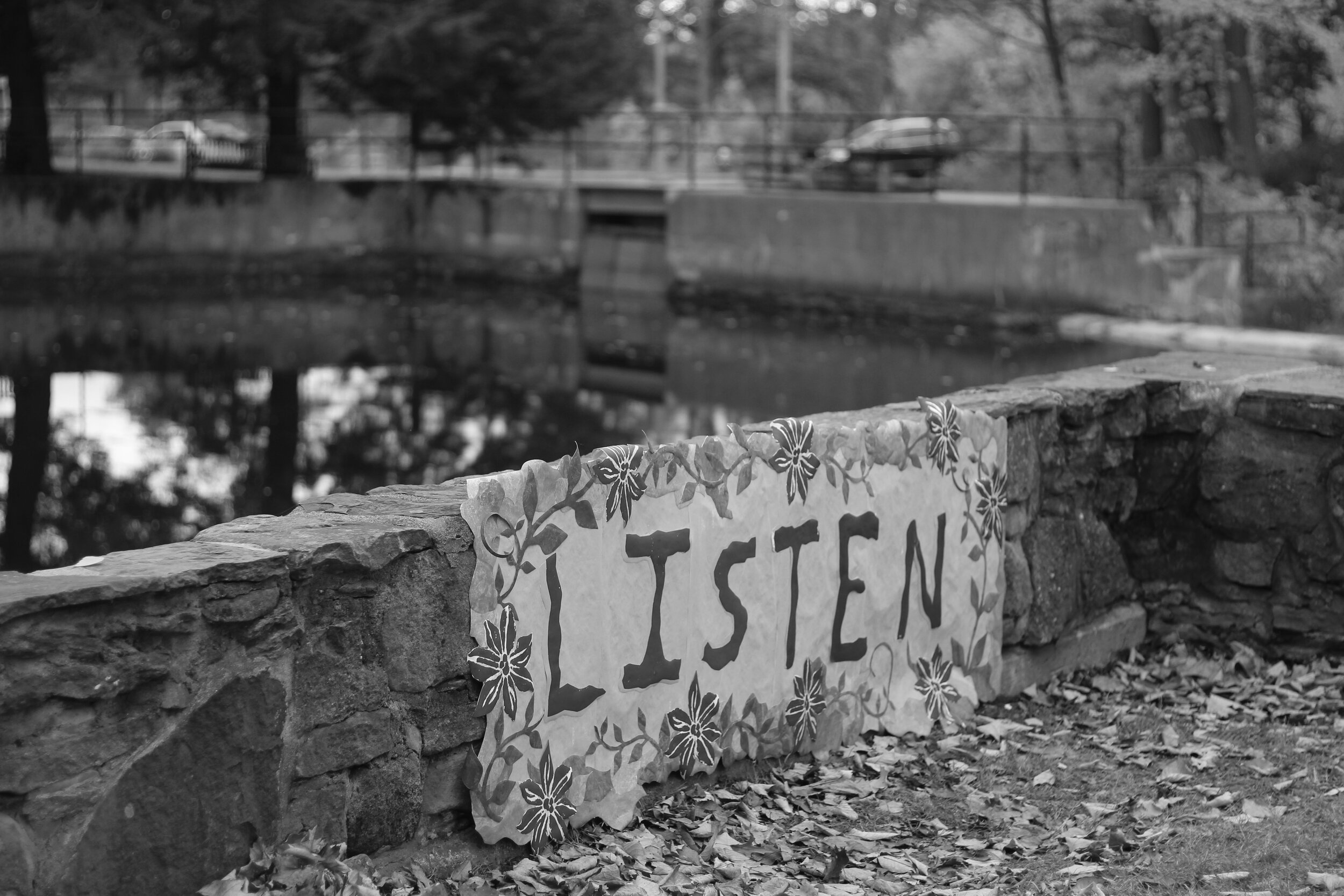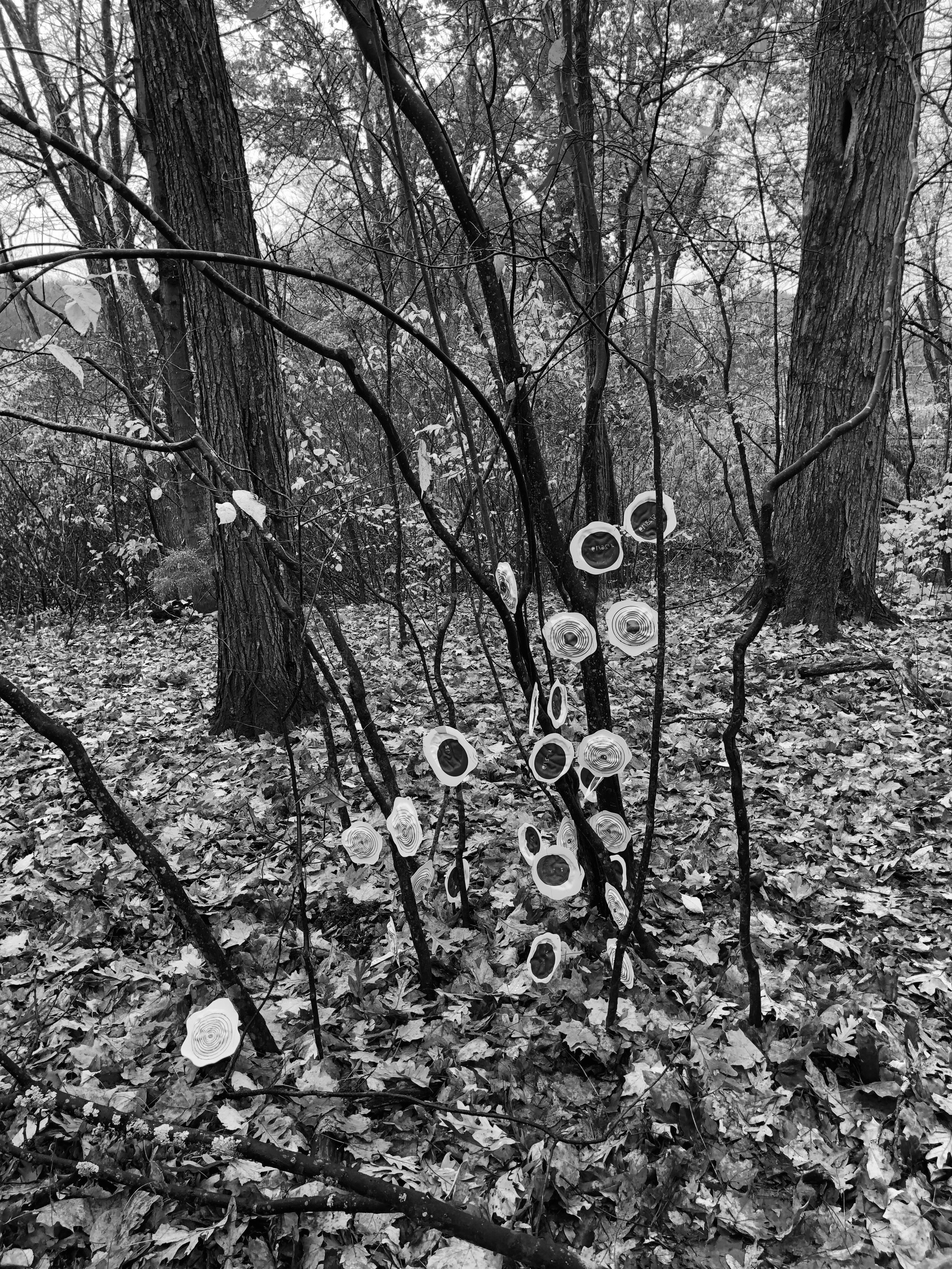Photos by Ali Meizels ’23 (top left), Katie Kelso ’20 (top right) and Annabelle Shea ’23 (bottom)
Mount Holyoke students installed ecological art around campus for their art class, Expanded Print Media.
BY ANNABELLE SHEA ’23
Industrial orange netting woven with multicolored disks lines the artificial pond by the Talcott Greenhouse. This art piece, created by Samiha Tasnim ’20, is one of 14 ecological art installations on campus created as part of Guest Artist in Art Amanda Maciuba’s course, “Expanded Print Media.”
Students are challenged to create two-dimensional prints that can exist fully in our three-dimensional world. The art must be interactive and incorporate students’ natural environment. All art must also function as outdoor installations, meaning that for the art to withstand harsh weather conditions, it must be waterproof.
“Some students are waterproofing, some students are doing it on waterproof materials to begin with and some students are interested in how the [installation] degrades over time — that’s part of their installation. There’s a few students doing mud stencilling because it will disappear over time,” Maciuba said.
According to Maciuba, the art should also examine the various relationships between humankind and the environment.
Installation art “asks artists and their audiences to consider the natural world as not just a source of inspiration, but also a realm to influence directly and transform through creative means,” she said.
Each installment is inspired by a certain location on campus and illustrates the artist’s response to specific environmental conditions.
Collaboration with Mount Holyoke’s Project Stream initiative has allowed students to create while remaining mindful of campus greenery. Project Stream works to maintain a waterway feeding into campus lakes that has undergone remediation through Mount Holyoke’s ecology classes.
For Katie Kelso ’20, Project Stream’s role as a living lab on campus helped to inspire her installation.
“My project is specifically about the rainfall data from the past year and looking at a way to take something so specific and bringing it back into the environment it was collected from in an engaging, aesthetically pleasing way,” she said.
Installations must also coexist in their natural environment with minimal ecological impact.
“All the [installations] that went through Project Stream had to be approved by Jenica Allen [campus living lab manager] because we had to make sure they wouldn’t harm the environment that the school has created and restored,” Maciuba said.
This integration of student projects into a natural environment made the assignment especially difficult.
“Working outside had a few challenges: I needed to poke holes in each piece so they wouldn’t collect water and get too heavy,” Kelso said. “I had to switch my location so the trees would be strong enough to support it without being damaged.”
Students explored a variety of subject matter in their projects. Topics ranged from the care and sustainability of first-year plants to rainfall data.
Reflecting on Tasnim’s installation, Maciuba said, “Her idea was invasive plants — specifically something called a ‘water hyacinth.’ She was thinking about how water hyacinths are very beautiful from afar, but they actually cover a pond and block out all nutrients and light so nothing can grow underneath. They appear beautiful to us, but they are actually destroying the ecosystem of the pond.”
Other on campus student art locations include the botanical garden, Project Stream and the Upper Lake dam.



